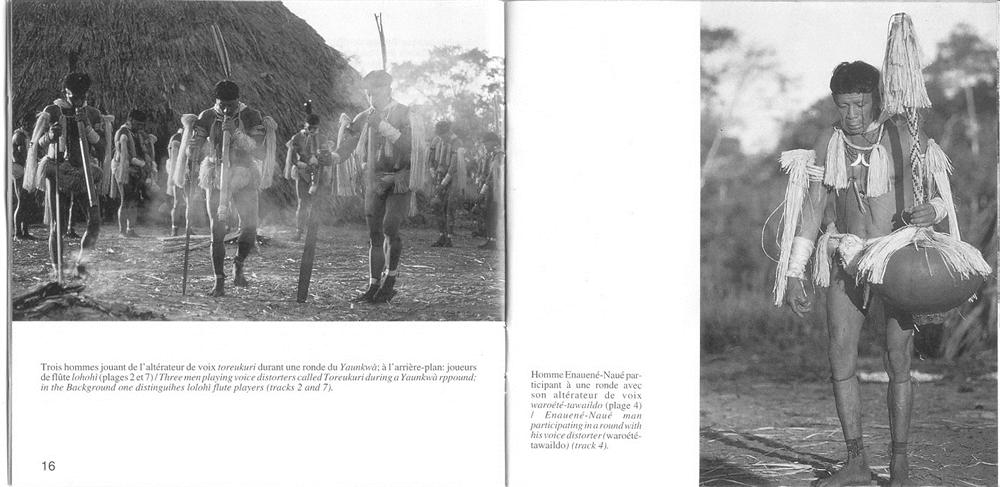hier ein schönes expemplar einer sogenannten "thunder gourd"
http://youtu.be/LrIDDPhT3RA
flaschenkürbisse sind schon was feines.
die laden regelrecht dazu ein was daraus zu basteln.



A mushroom form is what I found, with beads around
Its stem in shades of gold, red and brown it does abound.
Headdress I say. It is so grand,
And now I want to learn its land.
It’s from Malaysia, don’t you know, from Sarawak
On Borneo. This Land of Hornbills has no lack
Of lovely works of art to use
From beads, clay, cloth – even tattoos
Now who wears this mushroom cap I must discover
‘Cause this chapeau is more than just a head cover.
It goes upon a priestess’ head,
This striped top — brown and gold and red.
CL hat geschrieben:Lately I've been creating music by playing raw tree materials: leaves, bark, pinecones, and so forth. It's fun to imagine this as an exercise in musical time travel. Before the discovery of tools and the creation of more sophisticated instruments, perhaps early men and women noticed that the various "petals" on a pinecone each have their own pitches. Yes, it’s more likely that they were into singing, but maybe not. Perhaps, like me, some of them didn’t have very good voices, preferring to let pinecones sing in their stead. Thus were created the great prehistoric orchestras- of pinecone thumb pianos. They must have sounded amazing in those resonant caves, accompanying the visual artists in those very earliest of multimedia performances. Funny, that the archeologists thought all those pinecones were gathered merely for food.




http://soundcloud.com/slowbyte/voice-distorter-dialoguethe voice distorter called aluahko was made from a large calabash of about 50 cm in length and 20-30 cm in width, in which a hole was bored at one end. The player carried it with both hands and emitted the lowest-pitched sound of the sequence. the other voice distorter responding to him, called waoete-tawaildo, was made from an assemblage of reed tubes; on the bottom end a large round calabash of 50-60 cm width was attached. The men's dialogue was punctuated by occasional interventions produced by the five other men present who used trumped-type voice distorters called toreukuri.
the pareci's misfortune lay in their peaceful nature, their lack of central political organisation and the fact that they inhabited large and easily accessible villages in the grasslands of the plateau (mato grosso). they were therefore an easy prey for slavers. the first expeditions for slave labour were organised after the travels of Antonio Pires de Campos and following his instructions. the pareci were raided for nearly two centuries by slave traders, seekers of gold and pecious stones, latex collectors and other visitors of time. thanks to colonel rondin, the survivors of this nation seem to have received from 1910 on a more decent and humane treatment. Nevertheless, their assimilation was rapid, to the point that the telegraph commision hired some of them as employees or telegraphers.
the pareci are considered to be completely assimilated since the late twenties. However, their mythological and religious traditions have been rather well preserved to this day, as is evidenced by Adalberto Holanda Pereira's recent work entitled "O pensamento mitico do Pareci" which appeared in 1986. the jesuit author collected more than 300 myths, the majority of which were recounted to him orally by living Pareci individuals.
Und so wird's auch zu laufen haben, wenn ich das näxte mal Tier esseSlider hat geschrieben:mein alt-altvorderer noch hätte das garantiert anders gesehen, der war der meinung, wer sich von tierprodukten ernähren will,
der sollte das tier auch selbst schlachten & ausnehmen, und warum dann auch nicht die überreste weiter-verwerten?
anima hat geschrieben:Aber hey, was hab ich da schon zu melden ... sitz hier auf meinem gemütlichen Arsch, fälle Urteile über Fremde und häng mich an LuxusProblemen auf
Mitglieder in diesem Forum: 0 Mitglieder und 2 Gäste